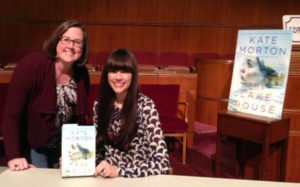
I approached The Women in the Castle with great personal interest. The story is set in my husband’s homeland – Germany. He was born in Berlin two months after V-E Day. His Mutti was born and raised in Berlin. While she tells “family” stories, she doesn’t like to talk about what Germany was like during the rise of Hitler and only a little more about what it was like to live in East Berlin following the war. I thought the book might provide some insight into her early adulthood.
The book opens at a party in an old castle in Bavaria. Germany is finally recovering from the World War. Instead of a complete feeling of hopefulness for the future, you find under tones of conflict. Uniformed Nazis stand beside others who sense Hitler is a danger to Germany and their way of life. Lines are being drawn between support or resistance to Hitler.
The castle is the once grand home of Albrecht von Lingenfels’ family. He, his wife, Marianne, and their three children are attending the party. Also attending is Marianne’s childhood friend, Martin Constantine (“Connie”) Fledermann, and his fiancée, Benita. During a quiet moment of the party, they discuss where they stand. Albrecht and Connie will take active roles in the resistance and Marianne will be the “Commander of Wives and Children”. She chafes at the title thinking it is a passive role.
Several years later, after Albrecht and Connie are hung for their participation in the failed assassination attempt on Hitler, Marianne discovers her role is much more active and emotionally demanding than she had once thought. Finding and protecting fellow resistance widows and their children is not easy. It will take all of her determination, stamina, and wits to carry out her assignment.
Marianne first finds Martin, Connie and Benita’s son in a Nazi reeducation home. Together, they find his mother in the bombed out remains of a Berlin apartment house where she has been kept by Russian soldiers who used her body for entertainment. Despite all her efforts, Marianne was only able to locate one other resistance widow, Ania, and her two children, who are rescued from a camp for displaced persons. The three widows and their six children eke out a life in the remains of the von Lingenfels castle.
Marianne believes their shared losses will allow them to face an uncertain future united. But, each of the widows have their individual way of handling daily interact with people who were once Nazis or Nazi sympathizers. Through a series of flashbacks, you learn the back story of Marianne, Benita, and Ania which allows you to understand the differences in how they moved forward.
The three eventually go their separate ways. Marianne feels betrayed by the choice Benita makes and actions Ania takes. Benita and Ania feel judged by Marianne’s strict black-and-white view of the world. In the end, Marianne understands the part she played in the destruction of her makeshift family and a partial reconciliation is achieved with the help of their children.
In addition to providing a compelling story, the book also offers two additional things. First, it offers its readers an opportunity to reflect on how they would maintain their own humanity in the face of fear, personal harm, and human atrocities. Secondly, readers are offered an opportunity to compare that with a narrative demonstrating how good people can become Nazis.
Did it provide insight into what my Mutti-in-Law experienced? No. But, it made me look at myself and the world differently and I hope I am a better person for it.








